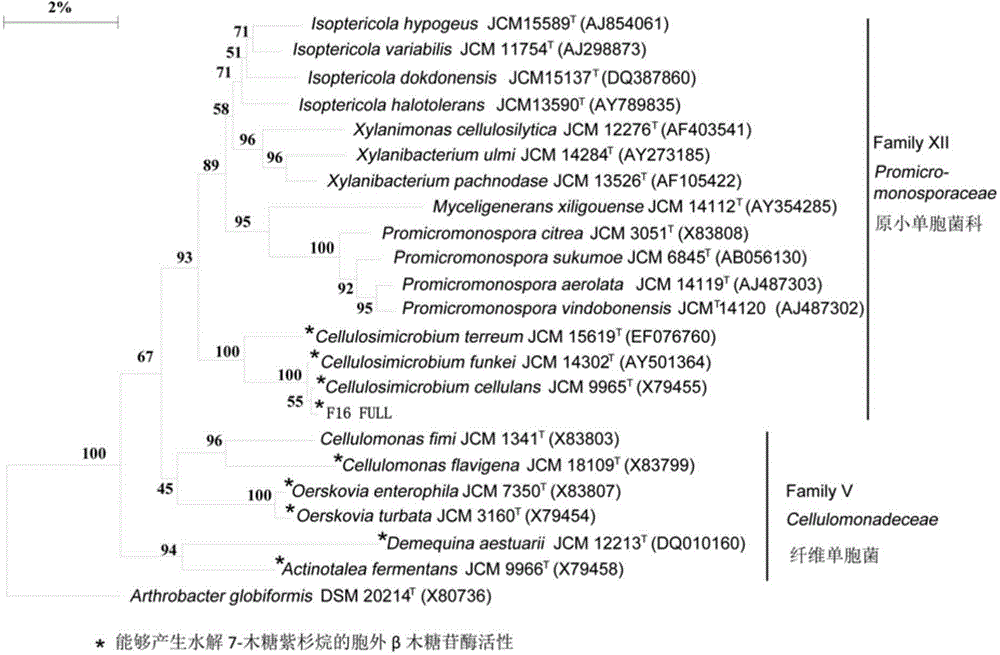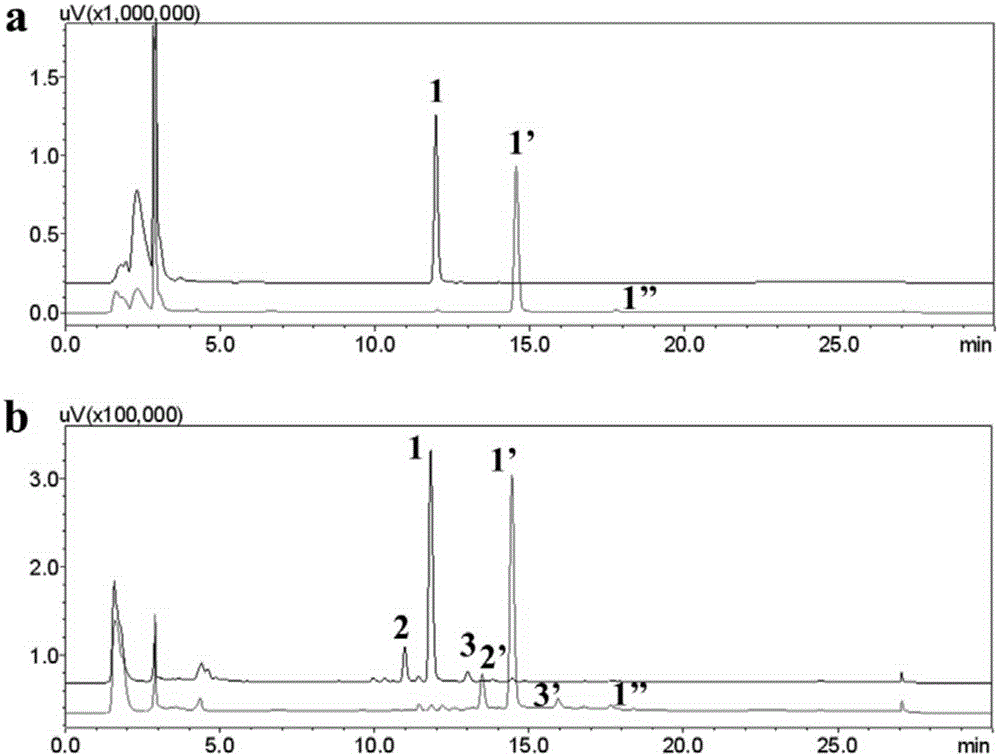Application of Cellulomonadaceae as industrial biocatalyst
A Cellulomonas, biocatalyst technology, applied in microorganism-based methods, biochemical equipment and methods, microorganisms, etc., can solve problems such as inability to meet industrialization requirements, limitations of enrichment and separation catalytic efficiency, etc.
- Summary
- Abstract
- Description
- Claims
- Application Information
AI Technical Summary
Problems solved by technology
Method used
Image
Examples
Embodiment 1
[0026] Preparation of crude enzyme solution
[0027] A medium (pH 7.0 before sterilization) containing 1% starch, 0.2% peptone, 0.2% yeast extract, and 0.2% dipotassium hydrogenphosphate was used as the medium. Cellulomonas flavigena bacteria of Cellulomonadaceae (Cellulomonadaceae) were inoculated into the above-mentioned medium, and cultured with shaking at 150 rpm at 30° C. for 24 hours. After the fermentation culture is finished, after the cells are removed by centrifugation, the supernatant is taken, which is the crude enzyme solution.
Embodiment 2
[0029] Preparation of crude enzyme solution
[0030] A medium (pH 7.0 before sterilization) containing 1% starch, 0.2% peptone, 0.2% yeast extract, and 0.2% dipotassium hydrogenphosphate was used as the medium. Oerskovia enterophila or Oerskovia turbata bacteria of Cellulomonadaceae (Cellulomonadaceae) were inoculated into the above-mentioned culture medium, and cultured with shaking at 150 rpm at 30° C. for 24 hours. After the fermentation culture is finished, after the cells are removed by centrifugation, the supernatant is taken, which is the crude enzyme solution.
Embodiment 3
[0032] Preparation of crude enzyme solution
[0033] A medium (pH 7.0 before sterilization) containing 1% starch, 0.2% peptone, 0.2% yeast extract, and 0.2% dipotassium hydrogenphosphate was used as the medium. Demequina aestuarii bacteria of the family Cellulomonadaceae were inoculated into the above-mentioned culture medium, and cultured with shaking at 150 rpm at 30° C. for 24 hours. After the fermentation culture is finished, after the cells are removed by centrifugation, the supernatant is taken, which is the crude enzyme solution.
PUM
 Login to View More
Login to View More Abstract
Description
Claims
Application Information
 Login to View More
Login to View More - R&D
- Intellectual Property
- Life Sciences
- Materials
- Tech Scout
- Unparalleled Data Quality
- Higher Quality Content
- 60% Fewer Hallucinations
Browse by: Latest US Patents, China's latest patents, Technical Efficacy Thesaurus, Application Domain, Technology Topic, Popular Technical Reports.
© 2025 PatSnap. All rights reserved.Legal|Privacy policy|Modern Slavery Act Transparency Statement|Sitemap|About US| Contact US: help@patsnap.com


